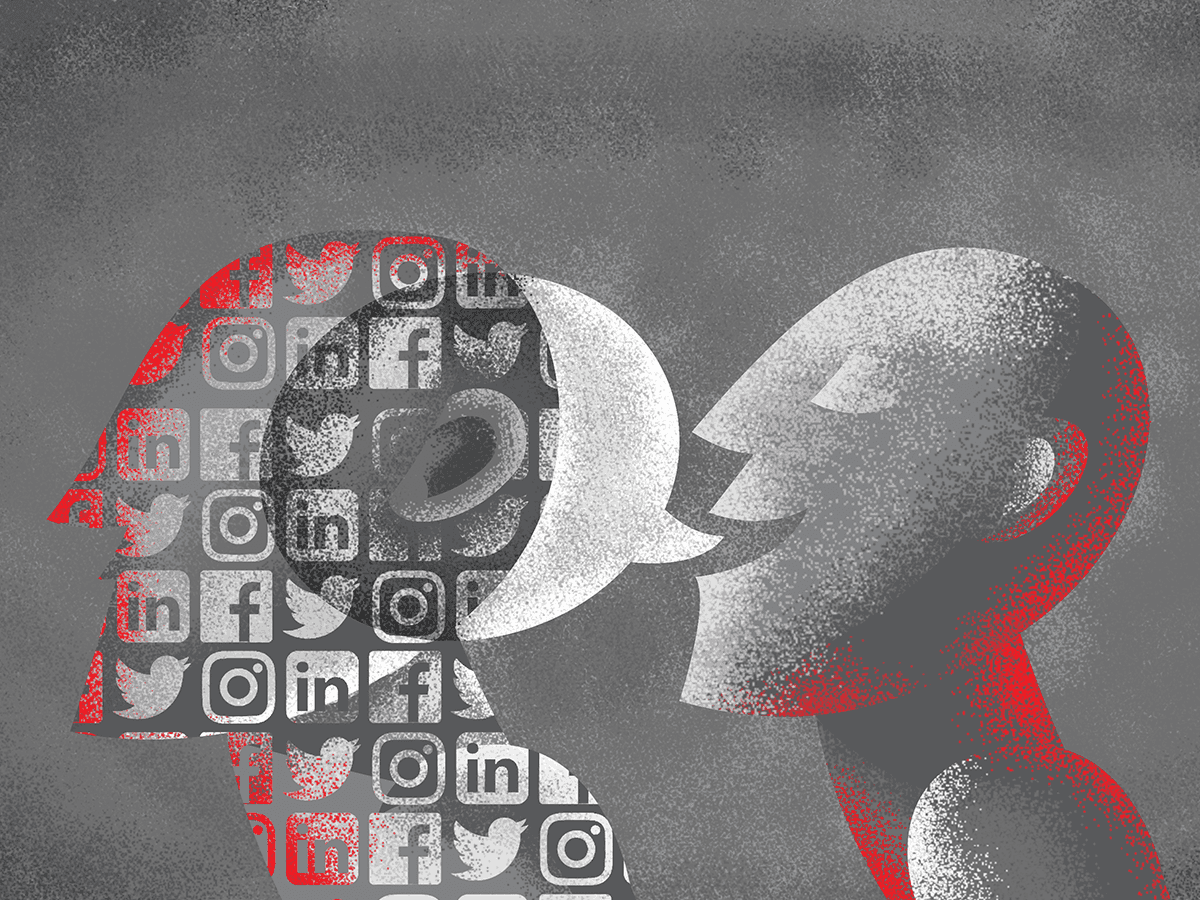Can you think of a friend you’ve had who talked about themselves often but rarely listened and only did so when it was convenient for them? That’s what a lot of brands do on social media every day, and with similar consequences—fewer followers, fewer loyalists and, overall, less impact.
Much like real-life relationship building, brands that listen and act on what they’ve heard are more likely to build solution friendships with audiences. People like brands that show up, bring something to the table, own their mistakes and make things right.
With the proliferation of content, consumers can be—and are—pickier about the brands they follow, engage with and patronize. Brands doing well are listening as much (if not more) than they are talking. In other words, they’re paying attention, going above and beyond to initiate connections. The successful brands? They’re turning up in places where they’re not often expected but are welcomed.
And that’s what social listening is really all about: it’s showing up. It’s showing your target you’re there, you’re witness to what’s going on, you get it and you have something compelling to say.
Social listening can benefit your business too. By observing how your product functions (or fails to function) through your consumers’ honest, sometimes unfiltered, feedback, you can improve in ways that will make a positive impact on customers—and your business.
Consumer insights that are often difficult (read: expensive) to collect are served up every day on 140-character platforms, and they’re yours for the taking—but only if you’re listening. Listening tools can help you capture and reveal that qualitative data, including insights into the tone of conversations happening about your product category.
The insights you glean through social listening help you to:
1) Better understand your customers’ pain points
Southwest Airlines went the extra mile to ease customers’ pain when a tech glitch grounded thousands of passengers—who started to get hungry and cranky and social. The airline caught wind of the complaints, and their employees brought passengers pizza. In Southwest’s case, they used what they heard on social to help compensate for an inconvenience caused to customers and, ultimately, to keep brand loyalty intact. The result? Many customers praised how well Southwest handled the situation. It pays to listen.
2) Discover your competitors’ weaknesses, then seize opportunities to fill gaps
Imagine the would-be underdog Dollar Shave Club listening for comments about razor expensiveness, not just competitors. Someone complains about their latest in-store purchase of razors being exuberantly expensive or laments the travesty that is going to the store every month to pick them up.
Enter: Dollar Shave Club. You deserve better, @UnhappyCamper123. Try any razor for $1.
With social monitoring alone, Dollar Shave Club would probably never see @UnhappyCamper123’s tweet. They’d miss the opportunity to convert a likely buyer (i.e., someone who’s purchased razors in the past) to their brand. However, by keeping their ear to the ground for ruminations about razors, they were able to act.
Social listening tools like Sysamos, Sprout Social and Brandwatch (among many others) can scoop up opportunities like this from across the most popular social platforms and deliver them right to you. Then all you need to do is choose the right moments to jump in. In fact, customers are waiting for you to do so.
3) See what’s working, why and with whom
Social listening can also help you identify new consumer segments where your message will resonate.
The cosmetics company CoverGirl found their first-ever male spokesperson, 17-year-old James Charles, through social media. His outside-the-box makeup tutorials have garnered him thousands of followers, even gaining the attention of the popular news and entertainment site BuzzFeed. CoverGirl paid attention, and now they’ve staked a claim on the burgeoning male beauty niche.
Arguably, it’s not difficult for a major brand to find an influencer like Charles by simply searching. But small and mid-sized companies especially need to be actively listening, because their insights lay in the everyday—tweets between two friends about a product or threads on a community dashboard. That’s where you might find your next big idea—and potentially up-and-coming influencers who align with your brand’s message and can serve as a megaphone for it.
4) Identify brand advocates worth amplifying
For many, missing out on criticism is reason enough to embrace social listening—but why not consider all the positive feedback you’re missing out on? There’s great value in that too.
Let’s say you’ve gone above and beyond to help a mommy blogger source the ingredients in your organic baby food. Then she tweets to a fellow blogger about your top-notch customer service and local ingredients but doesn’t tag you. You’re probably thinking, it’s nice to be complimented, but is it worth the money I’ll invest in social listening?
It might be, and here’s why: Data shows 83 percent of consumers trust peer recommendations over advertising, and similarly, 60 percent of YouTube subscribers say they would follow advice on what to buy from a favorite video creator over a traditional celebrity. In the age of fake news and information overload, an authentic customer endorsement is an asset. By listening for all mentions of your brand, you can find your most loyal fans—the ones who can help your brand’s story rise above the rest—and then amplify their voices.
Want to hear more? Connect with Nate Tredinnick at ntredinnick@hiebing.com to learn about how we listen, what we learn and why it matters for brands.
